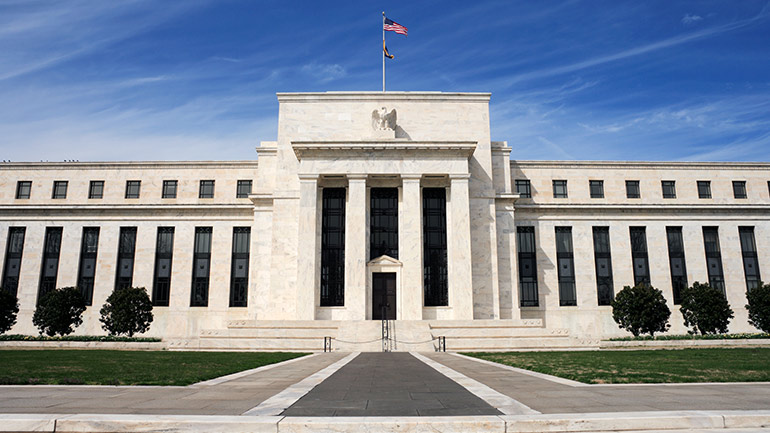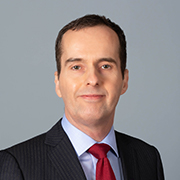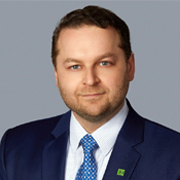March FOMC: The Hike That Wasn't
By: Jan Groen, Oscar Munoz, Priya Misra, Gennadiy Goldberg, Molly McGown, Mazen Issa
March 24, 2023 - 3 minutes 30 seconds
The FOMC delivered on the rate hike, as expected, with a 25bp increase in the fed funds target range to 4.75%-5.00%. Fed Chair Powell cited continued high core inflation and a tight labor market, as a motivation for the Committee to continue to tighten its policy stance. However, the Committee changed the policy section where it refers to forward guidance, going from anticipating "ongoing increases... will be appropriate" to "some additional policy firming may be appropriate". This is largely the result of the added uncertainty from recent developments in the banking sector. However, Chair Powell also laid out a two-tier approach to separate monetary policy from recent financial stability issues, where the discount window and the BTFP facility are used to guarantee sufficiently liquid market conditions for banks.
Despite the recent string of stronger-than-expected inflation and labor market data, the statement and the Chair's remarks made clear the FOMC accounted for the potential adverse impact of recent financial market turmoil and the uncertainty around the severity of it. As Chair Powell mentioned in the post-meeting Q&A, "What I heard [at the FOMC meeting] was a significant number of people saying that they anticipated there would be some tightening of credit conditions. And that would really have the same effects as our policies do. And that, therefore, they were including that in their assessment. And that if that turned out not to be the case, in principle, you'd need more rate hikes."
Essentially the hard data and the fact the Fed is behind the curve in terms of its war on inflation warranted a higher terminal fed funds rate than the one implied by the December SEP. However, the higher degree of uncertainty that ensued on the back of recent financial market instability made the FOMC wary to fully commit to further hikes beyond the May meeting.
Looking at the hard data the Fed still has a ways to go before it has inflation back under control. The 3-month and 6-month moving averages of payrolls changes seem to have stabilized around a level around 300k, and wage growth remains too high compared to what is consistent with the Fed's 2% inflation target. This does not suggest that an imminent cooling of the labor market is forthcoming, and this cooling is necessary to slow inflation in the services sector. Consequently, momentum in core services inflation excluding housing services, is still high with core services excl. housing inflation settling down around an average that is quite a bit above the pre-COVID average.
The Fed is Not Done Yet in May
The Fed clearly urgently needs the labor market to slow down. Using the time-varying Phillips curve models from our 2023 inflation outlook and combining it with our unemployment path that incorporates a recession from Q4 2023 onwards, we should expect a sticky core PCE inflation path into 2024. That remains the case even when we impose that core PCE inflation eventually returns to 2% instead of allowing some entrenchment of higher inflation to occur.
Putting all of this together the fed funds peak, in our view, should go beyond the level implied by the December SEP. In principle, the recent tightening in financial conditions and its impact on the economy could deliver the additional necessary tightening for the Fed. However, recent financial stress seems relatively modest, possibly in line with the effect of an additional 25bp hike, and needs to persist for a prolonged period to have a meaningfully larger impact on the macroeconomy. Based on this we do expect that continued strength in upcoming data on core inflation and the labor market will force the Fed to hike beyond the May meeting before settling on a terminal target range of 5.25%-5.50% at the June meeting. This means we project 25bp rate increases at both the May and June meetings. As we continue to expect the economy to slide into a recession in Q4, we maintain our call that rate cuts will commence at the December meeting, with a totality of 275bp in cuts up to the September 2024 meeting.
Subscribing Clients can access full report: March FOMC: The Hike That Wasn't on the TD Securities Market Alpha Portal

Chief U.S. Macro Strategist, TD Securities

Chief U.S. Macro Strategist, TD Securities

Chief U.S. Macro Strategist, TD Securities

Vice President and U.S. Macro Strategist, TD Securities

Vice President and U.S. Macro Strategist, TD Securities

Vice President and U.S. Macro Strategist, TD Securities

Managing Director and Global Head of Rates Strategy, TD Securities

Managing Director and Global Head of Rates Strategy, TD Securities

Managing Director and Global Head of Rates Strategy, TD Securities

Director and Senior U.S. Rates Strategist, TD Securities

Director and Senior U.S. Rates Strategist, TD Securities

Director and Senior U.S. Rates Strategist, TD Securities

US Rates Strategist

US Rates Strategist

US Rates Strategist

Director and Senior FX Strategist, TD Securities

Director and Senior FX Strategist, TD Securities

Director and Senior FX Strategist, TD Securities




